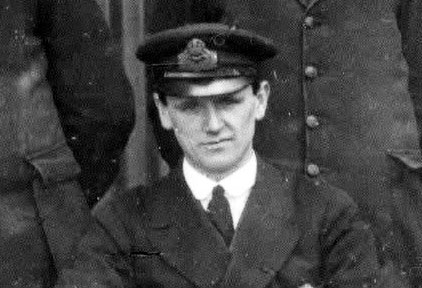
THE COMMANDER
Walter Kerneys Francis Goodhall Warneford AFC was born on 19 July 1895, the only son of Walter and Mary Warneford. His father, Walter Wyndham Hayden Warneford, was Works Manager of the LNWR works at Crewe from 1910 to 1916 and then Wagon Superintendant at the LMS railway coach and wagon works at Earlestown. Walter’s family home was Lansdowne House, Huyton, Lancashire. By 1919 Walter was “a thick-set, hearty, athletic young man of 24, and a favourite amongst his fellow airshipmen”.
Interestingly, Walter was a cousin of Reginald A. J. Warneford of the Royal Naval Air Service who received the Victoria Cross at the age of 23 for his action in attacking and destroying the German airship LZ37. He dropped bombs on the airship from his Morane-Saulnier Type L, the last of which set it on fire.
Following in his father’s footsteps, from 1912 to 1914 Walter Warneford was a pupil engineer with the London & North Western Railway in Crewe. This background and training in mechanical and motor engineering would soon prove invaluable in his career on non-rigid airships.
Warneford’s records show he joined the Kite Balloon Section of the RNAS and was Acting Flight Lieutenant by October 1914 – presumably following balloon training at the Wormwood Scrubs Naval Air Station, London.
His Naval records show he was based at Anglesea for some time and then transferred to Barrow. Here, during August and September 1915, he took training and instructional flights on Submarine Scout airships SS18, SS21, SS26 and SS30
From November 1915 to May 1916 he was back at Anglesea for training and instructional flights on SS22, SS24 and SS25 – possibly as an instructor. Warneford was made up to Flight Commander on 25 June 1915.
On 2 October 1915 SS24 hit a tree and broke a propeller. Two days later, during bomb-dropping practice and W/T trials the engine began to miss and failed completely off Llandudno. Sub Lt. P.E. Maitland carried out a balloon landing on the beach at Red Wharf Bay and ripped the envelope below high water mark.
Warneford was transferred to Capel airship station, near Folkestone during May 1916. Here he flew patrols and instructional flights on Submarine Scout airships SS4 and the SS12. He was then transferred to Longside in September 1916 where he flew as Coxwain on instructional flights and patrols on Coastal airships C5 and C13.
Based for a month at Kingsnorth, during November 1916 he was transferred to East Fortune and took command of Coastal airship C25. At East Fortune he also flew in C24 and C20 on patrols and training flights. Warneford and his crews racked up many hours flying time on C25 between November 1916 and July 1917.
On 29 November 1917 his engagement to Pansy Nina Grahame Chambers was announced in Flight magazine. Pansy was daughter of Captain William Graham Chambers, late Gordon Highlanders in Canada and, at the time, Lieutenant-Commander, RN.1
Back on 29 October 1917 Warneford took over command of North Sea Class airship NS4. While based at East Fortune in June 1918 the envelope was found to be in poor condition and, despite extensive repairs, had to be replaced. The ship with its new envelope was inflated on 28 July 1918 and commenced patrol and convoy escort duties.
Earlier on in the early summer of 1918 Warneford carried out deck landing trials on the aircraft carrier HMS Furious in SSZ 59. Together with Capt G. S. Greenland and 2nd Lt. Wicks on 27 May 1918 the airship was pulled down to deck by a trail rope and made fast to the aeroplane lift. The lift was then lowered so that only the envelope remained above the flight deck
On 29 August Warneford flew NS4 to Kingsnorth for modification.
At the beginning for September 1918 Warneford took over command of NS11 and delivered it to, what was to be its home base, Longside in Aberdeenshire. It was with NS11 that Warneford began to rack up flights of many hours endurance; first 28 hours, 15 minutes on 12-13 November; then 61 hours, 21 minutes on 17-19 November. See THE FIRST BIG TRIP.
NS11 was temporarily out of commission from 16 December 1918 and Warneford and the crew went on Christmas leave. NS11 was then very nearly deflated for good but the order was rescinded and the airship was serviceable again by 31 January.
Warneford and NS11 set out again on a mine-hunting patrol from Longside on 9 February to return on 13 February to set another world endurance record – flying 2,300 miles in 100 hours, 50 minutes. Apart from difficult weather conditions, especially great variations in temperature; the usual magneto problems; and difficulties picking up fresh drinking water (after several attempts) the flight was fairly uneventful. Warneford did nearly lose Sergeant Mechanic J. Wrenn over the side when he collapsed exhausted after starting an engine single-handed. He fell off the rail but was caught by a piece of 5 cwt wire. Cold, cramped and tired, the conditions would have been challenging for the crew. As they had taken off with 400 lbs of food they may not have been hungry, but thirsty they certainly were as they had no ballast or drinking water left by their return.
But for the shortage of radiator water (10 gallons of drinking water went into the radiators) the flight could have been considerably extended. Due to skill and judicious consumption of fuel, NS11 finished the patrol with 300 gallons of petrol in reserve – enough for another 40 hours flying time. Warneford and his engineers had tuned the 250 HP Fiat engines to such a high degree of efficiency petrol consumption averaged 7 gallons an hour. In his report following the flight Warneford put forward many technical and operational recommendations for extended airship flights.
As his Commanding Officer, Lieut. Colonel R.S. Robinson wrote of Warneford, “…it is not too much to say that only a very experienced pilot who has carefully observed and studied every detail of general flying conditions and of his own ship in particular could have succeeded in in accomplishing not only a feat of personnel endurance, but also a significant and noteworthy contribution to the possibilities of airships in the future.” Warneford and NS11 were now really making a name for themselves in the airship world.
Perhaps encouraged by his success so far and sensing time was running short, as the airship service was being wound down after the end of the war, Warneford took NS11 on a circuit of the North Sea in March 1919, covering 1,285 miles in 40 hours and 30 minutes. Accompanied by NS12, this was the first airship flight across the North Sea, cruising off the coast of Norway for several hours. As Ces Mowthorpe in his book Battlebags wrote, “Warneford and NS11 were fast becoming invincible”.
In April and May, NS11 took an educational break at the LTA Training Wing at Cranwell. Warneford was awarded the Air Force Cross on 5 June 1919 and, in the same month, flew NS11 to Pulham with the intention of patrolling the southern North Sea.
Then, on 6 July 1919, the British rigid airship R34 landed at Mineola, New York to complete a 108 hour, 12 minute cross-Atlantic journey from East Fortune. Amid a frenzy of publicity and media attention R34 had beaten Warneford’s endurance record – but only just. R34 landed with only 104 gallons of fuel remaining – enough for just two more hours of flying time at reduced power.
This triumph for Britain and the airship service will have no doubt been a bitter blow for Warneford.
Spending only three days in New York, R34 set off to return to East Fortune and a heroes’ welcome. Ironically, on the evening of 12 July, due to weather conditions and a change in orders, R34 was diverted to land at Pulham in the early hours of 13 July to a quieter reception and the home base of NS11. Warneford must have been been pleased by the achievement of Major G.H. Scott and the crew of R34 – but, we can speculate, would not have been happy that his record had been broken.
Warneford and NS11 set out across the North Sea on the evening of 14 July with a reduced crew and “ample supplies of petrol”. We may never know if Warneford was setting out to reclaim his record, but he and the crew of NS11 never returned.
NOTES
1. Walter and Pansy didn’t marry. However, on 15 July 1919, the very day NS11 was lost and Warneford and his crew killed, Pansy married Patrick Gream Nelson Ommanney (former commander of the airship R27) at the Holy Trinity Church, Brompton, London. Also at the church that day was Edward M. Maitland, Brigadier General of the RAF who had returned from the USA to Pulham aboard R34 just two days before. His signature is written on the margin of the wedding certificate. On 8 December 1930 Pansy married Perceval Antony Thomas Hildebrand Harmsworth son of Sir Hildebrand Aubrey Harmsworth.
2. Walter Warneford’s total effects of £635 15s 5d were left to his father Walter Wyndham Hanbury Warneford.
Images of airships reproduced with kind permission of Brian Turpin.

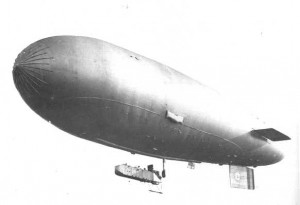
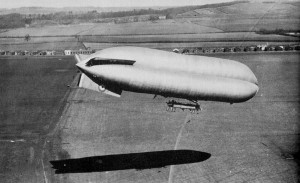
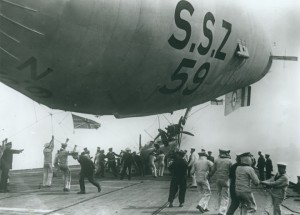
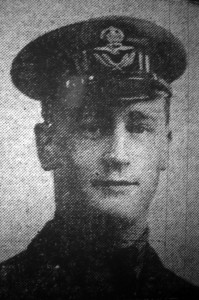
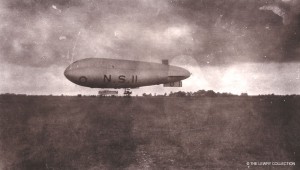
 NS11 – As Bright As Day is very much a work in progress and has been made possible by the generous and enthusiastic support of many individuals and organisations. If you have any information, records or material relating to British NS Class airships we would be very interested to hear from you – especially anyone related to members of the crew of NS11 or any airship of the class during their service with the RNAS or RAF during and beyond WWI.
NS11 – As Bright As Day is very much a work in progress and has been made possible by the generous and enthusiastic support of many individuals and organisations. If you have any information, records or material relating to British NS Class airships we would be very interested to hear from you – especially anyone related to members of the crew of NS11 or any airship of the class during their service with the RNAS or RAF during and beyond WWI.
Latest